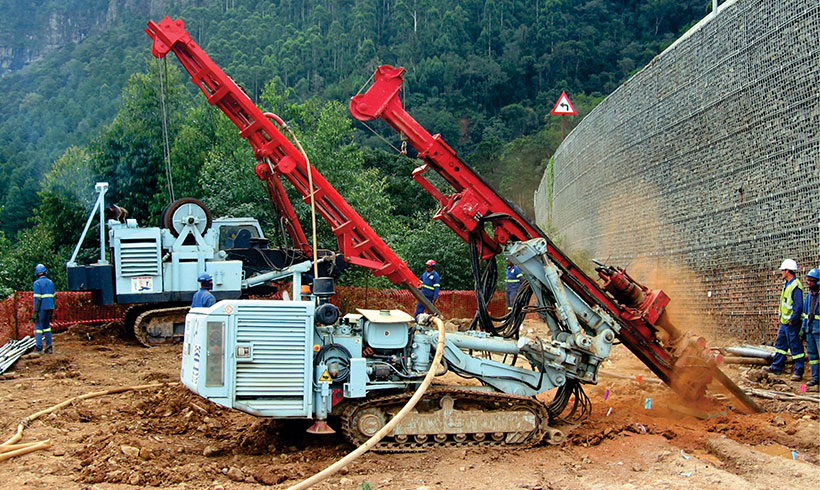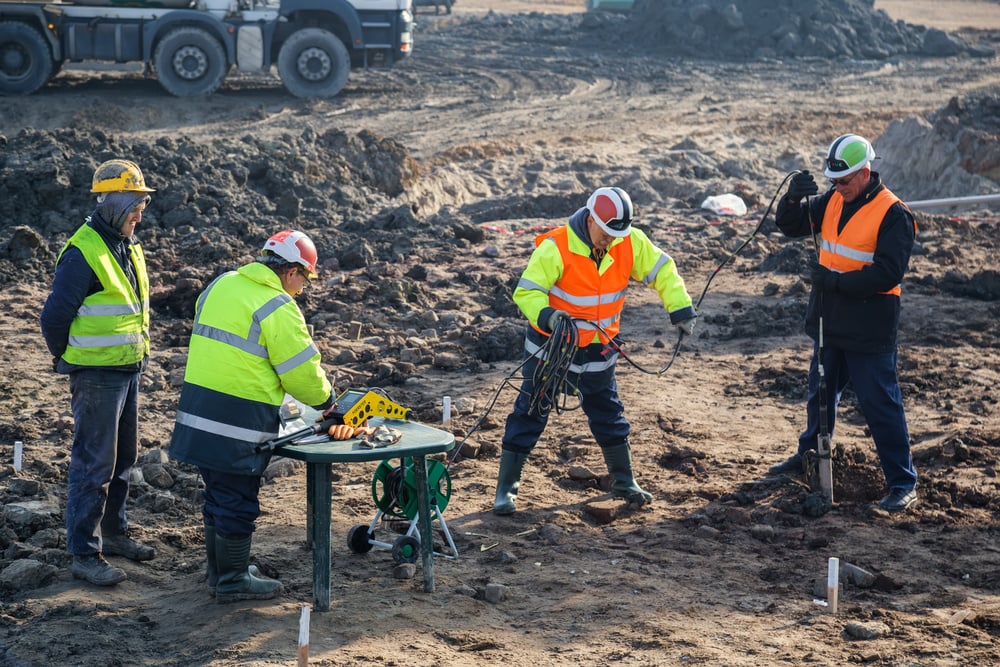6 Easy Facts About Geotechnical Engineering For Construction Projects Explained
About Geotechnical Engineering For Construction Projects
Table of ContentsNot known Factual Statements About Geotechnical Engineering For Construction Projects The Greatest Guide To Geotechnical Engineering For Construction ProjectsGeotechnical Engineering For Construction Projects Fundamentals ExplainedFacts About Geotechnical Engineering For Construction Projects UncoveredHow Geotechnical Engineering For Construction Projects can Save You Time, Stress, and Money.Top Guidelines Of Geotechnical Engineering For Construction Projects
The function of geotechnical engineering substantially takes care of realizing the features of dirt and rock, which might vary substantially by their thickness, moisture web content etc. These features should be analyzed by geotechnical engineers to anticipate their motions under various conditions. The security as well as security of structures are affected by dirt conditions, making this evaluation needed., in addition to just how they interact with buildings that have actually been set up on or within them, is one of the main descriptions for why geotechnical engineering is crucial.
Environmental security is completed through geotechnical engineering. Know-how in air, water, and dirt quality upkeep is put to use by geotechnical engineers to reduce the unfavorable impacts of projects.
To sum up, geotechnical design is a crucial self-control that protects the resilience and honesty of civil framework. Geotechnical engineers add to making structure jobs efficient all over the world by comprehending the behavior of earth materials and applying appropriate planning strategies.
The Ultimate Guide To Geotechnical Engineering For Construction Projects
The foundational stability of any project is important. Geotechnical design plays a critical role in guaranteeing that frameworks are improved strong ground, essentially and figuratively. By analyzing soil, rock, and subsurface problems, geotechnical engineers supply important understandings that assist in the design, construction, and upkeep of buildings and framework.

An Unbiased View of Geotechnical Engineering For Construction Projects
Research laboratory testing: Determining the residential properties of dirt and rock. Several top-level construction tasks have efficiently used geotechnical design to guarantee their stability and safety.

As a leader in geotechnical engineering, BECC Inc. is devoted to delivering ingenious and effective solutions that meet the highest possible requirements of quality and security. To learn more on how BECC Inc. can support your visit the website following building and construction task, contact us today and allow us assist you improve solid ground.
William Rankine, a designer and physicist, developed an alternative to Coulomb's planet stress concept. Albert Atterberg established the clay uniformity indices that are still utilized today for soil category. In 1885, Osborne Reynolds acknowledged that shearing reasons volumetric expansion of dense products and tightening of loose granular products. Modern geotechnical engineering is claimed to have started in 1925 with the magazine of Erdbaumechanik by Karl von Terzaghi, a mechanical engineer and geologist.
How Geotechnical Engineering For Construction Projects can Save You Time, Stress, and Money.
Terzaghi additionally developed the framework for concepts of birthing capability of foundations, and the concept for forecast of the price of negotiation of clay layers due to combination. After that, Maurice Biot totally developed the three-dimensional soil loan consolidation concept, prolonging the one-dimensional version previously created by Terzaghi to much more basic theories and introducing the collection of fundamental equations of Poroelasticity.
Geotechnical engineers investigate and establish the residential or commercial properties of subsurface problems and materials. They also make matching earthworks and preserving structures, passages, and structure structures, and might monitor and evaluate websites, which might further entail website tracking as well as the threat analysis and mitigation of natural risks - Geotechnical Engineering for Construction Projects. Geotechnical engineers and design geologists carry out geotechnical examinations to get info on the physical residential or commercial properties of soil and rock underlying and beside a website to develop earthworks and structures for proposed frameworks and for the repair work of distress useful site to earthworks their website and structures triggered by subsurface conditions.
Unknown Facts About Geotechnical Engineering For Construction Projects
Geologic mapping and interpretation of geomorphology are usually finished in appointment with a rock hound or design rock hound. Subsurface exploration usually includes in-situ screening (for instance, the common penetration test and cone penetration examination). The excavating of examination pits and trenching (especially for situating mistakes and slide airplanes) may likewise be utilized to find out concerning dirt problems at deepness. , which utilizes a thick-walled split spoon sampler, is the most common method to gather disrupted samples.

Normally, the user interface's specific geometry is unidentified, and a streamlined interface geometry is presumed. Finite slopes need three-dimensional models to be analyzed, so most inclines are evaluated assuming that they are definitely wide and can be represented by two-dimensional models.
Some Known Questions About Geotechnical Engineering For Construction Projects.
Developing the layout based on a functioning theory of actions prepared for under the most potential problems. Choice of quantities to be observed as building and construction earnings and determining their anticipated values based on the working hypothesis under the most unfavorable problems.
Dimension of amounts and evaluation of real conditions. Design adjustment per actual conditions The empirical technique appropriates for building and construction that has actually already begun when an unexpected development takes place or when a failing or mishap looms or has currently occurred. It is unsuitable for tasks whose style can not be modified during construction.